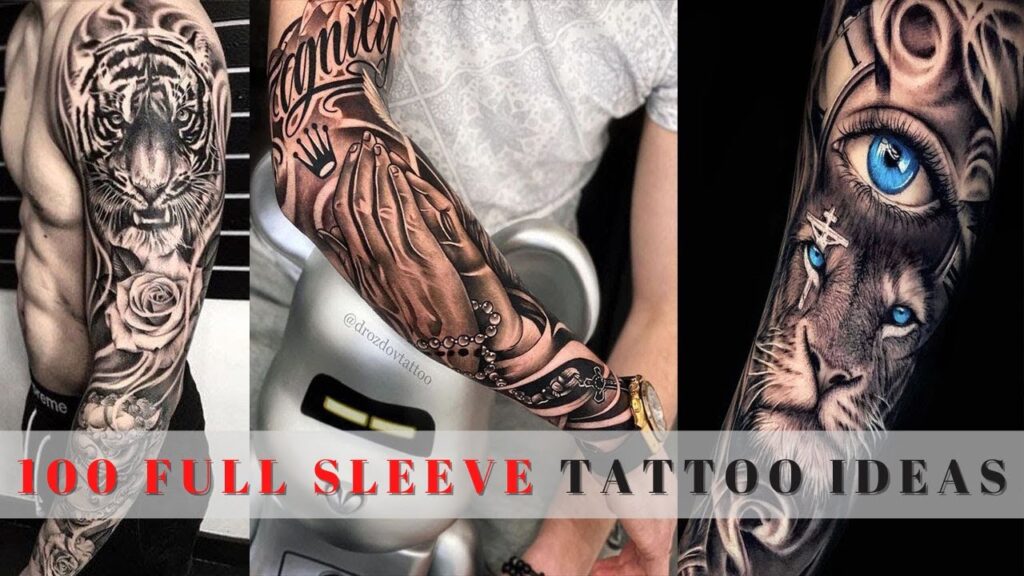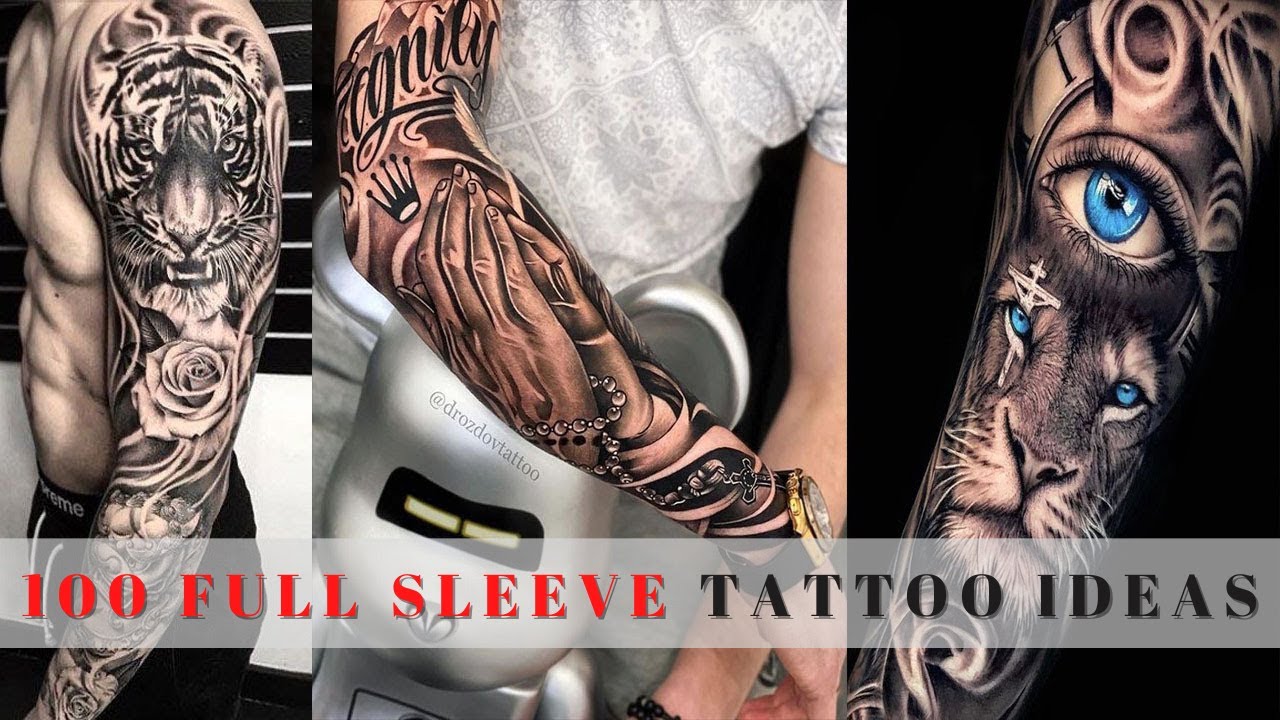
People with Sleeve Tattoos: Exploring the Art, Meaning, and Culture
Sleeve tattoos, those expansive works of art that adorn the arm from shoulder to wrist, represent a significant commitment to self-expression and personal storytelling. For many, choosing to get a sleeve tattoo is more than just a cosmetic decision; it’s a profound statement about their identity, beliefs, and experiences. This article delves into the world of people with sleeve tattoos, exploring the motivations behind their choice, the artistic styles they embrace, and the cultural significance these striking pieces of body art hold.
The Allure of the Sleeve Tattoo
What draws people with sleeve tattoos to such a bold form of body modification? Several factors contribute to the enduring popularity of sleeve tattoos.
- Self-Expression: A sleeve tattoo provides a vast canvas for expressing one’s personality, interests, and values. It allows individuals to curate a visual narrative that reflects their unique identity.
- Artistic Appreciation: Many people with sleeve tattoos are drawn to the artistry involved. They see their bodies as living canvases, collaborating with skilled tattoo artists to create intricate and visually stunning designs.
- Personal Significance: Sleeve tattoos often tell a story. They may incorporate symbols, images, or text that represent important events, relationships, or beliefs in a person’s life.
- Aesthetic Appeal: Let’s face it, sleeve tattoos can look incredibly cool. The visual impact of a well-executed sleeve tattoo is undeniable, and many people with sleeve tattoos simply appreciate the aesthetic appeal.
- Commitment and Dedication: Getting a sleeve tattoo is a significant investment of time, money, and pain tolerance. This commitment can be a source of pride and a symbol of dedication to one’s personal vision.
Popular Sleeve Tattoo Styles
The world of sleeve tattoos is incredibly diverse, with a wide range of artistic styles to choose from. Here are some of the most popular:
Japanese Sleeve Tattoos
Japanese sleeve tattoos, also known as Irezumi, are characterized by bold imagery, vibrant colors, and intricate details. Common motifs include dragons, koi fish, tigers, and cherry blossoms, each carrying symbolic meaning. These tattoos often follow traditional rules and placement, creating a cohesive and powerful visual statement. Many people with sleeve tattoos choose this style for its rich history and symbolism.
Tribal Sleeve Tattoos
Tribal sleeve tattoos draw inspiration from indigenous cultures around the world. These tattoos often feature bold geometric patterns, intricate linework, and symbolic representations of animals, ancestors, or spiritual beliefs. Tribal tattoos can be a way for people with sleeve tattoos to connect with their heritage or express their respect for different cultures. [See also: History of Tribal Tattoos]
Black and Gray Sleeve Tattoos
Black and gray sleeve tattoos offer a more subtle and sophisticated aesthetic. These tattoos rely on shading and contrast to create depth and dimension. Black and gray sleeve tattoos can be used to depict a wide range of subjects, from portraits and landscapes to abstract designs. Many people with sleeve tattoos prefer this style for its timeless appeal and versatility.
Realistic Sleeve Tattoos
Realistic sleeve tattoos aim to create photorealistic depictions of subjects such as portraits, animals, or objects. These tattoos require exceptional skill and attention to detail from the artist. Realistic sleeve tattoos can be incredibly striking and can serve as a powerful tribute to loved ones or cherished memories. The precision required makes this a commitment for people with sleeve tattoos looking for a specific look.
New School Sleeve Tattoos
New school sleeve tattoos are characterized by bold colors, exaggerated proportions, and cartoonish imagery. These tattoos often feature playful and whimsical designs, reflecting a lighthearted and irreverent attitude. New school sleeve tattoos are a popular choice for people with sleeve tattoos who want to express their creativity and sense of humor.
The Process of Getting a Sleeve Tattoo
Embarking on the journey of getting a sleeve tattoo requires careful planning and preparation. Here’s a breakdown of the process:
- Consultation: The first step is to consult with a reputable tattoo artist. Discuss your ideas, preferences, and budget. The artist can help you refine your design and determine the best placement for your tattoo.
- Design Development: Once you’ve chosen an artist, they will work with you to develop a detailed design for your sleeve tattoo. This may involve multiple revisions to ensure that you’re completely satisfied with the final result.
- Scheduling: Sleeve tattoos typically require multiple sessions to complete. Schedule your appointments in advance, allowing ample time for healing between sessions.
- Preparation: Before each session, it’s important to prepare your skin. This may involve shaving the area, exfoliating, and moisturizing.
- The Tattooing Process: During the tattooing process, the artist will use a tattoo machine to inject ink into your skin. The process can be painful, but most people with sleeve tattoos find the discomfort manageable.
- Aftercare: Proper aftercare is crucial for ensuring that your sleeve tattoo heals properly. Follow your artist’s instructions carefully, keeping the area clean, moisturized, and protected from the sun.
The Social Perception of Sleeve Tattoos
The social perception of sleeve tattoos has evolved significantly over time. In the past, tattoos were often associated with marginalized groups, such as sailors, criminals, and bikers. However, in recent years, tattoos have become increasingly mainstream, and sleeve tattoos are now widely accepted in many societies. [See also: Tattoo Acceptance in the Workplace]
Despite this increasing acceptance, people with sleeve tattoos may still face some challenges. In some professions, tattoos may be considered unprofessional or inappropriate. It’s important to be aware of your employer’s policies regarding tattoos before getting a sleeve tattoo. Additionally, some individuals may still hold negative stereotypes about people with sleeve tattoos.
However, many people with sleeve tattoos report positive experiences. They often find that their tattoos spark conversations and allow them to connect with others who share their passion for body art. Ultimately, the decision to get a sleeve tattoo is a personal one, and it’s important to weigh the potential benefits and drawbacks before making a commitment.
The Future of Sleeve Tattoos
The future of sleeve tattoos looks bright. As tattoos become increasingly mainstream, we can expect to see even more innovative and creative designs. Advancements in tattoo technology are also making it possible to create more intricate and detailed tattoos than ever before. Furthermore, the growing popularity of tattoo conventions and competitions is providing a platform for artists to showcase their talent and connect with people with sleeve tattoos from around the world.
In conclusion, people with sleeve tattoos are a diverse group of individuals who share a passion for self-expression, art, and personal storytelling. Their tattoos are not just ink on skin; they are reflections of their identities, beliefs, and experiences. As the social perception of tattoos continues to evolve, we can expect to see even more people with sleeve tattoos embracing this powerful form of body art. The dedication and artistry involved in creating a sleeve tattoo make it a unique and meaningful form of self-expression.
Caring for Your Sleeve Tattoo
Once you’ve invested in a beautiful sleeve tattoo, proper care is essential to maintain its vibrancy and prevent complications. Here are some key aftercare tips for people with sleeve tattoos:
- Keep it Clean: Gently wash your tattoo with mild, fragrance-free soap and water two to three times a day. Avoid harsh scrubs or abrasive cleansers.
- Moisturize Regularly: Apply a thin layer of unscented lotion or tattoo balm to keep the skin hydrated and prevent scabbing.
- Avoid Sun Exposure: Sunlight can fade your tattoo and damage the skin. Protect your sleeve tattoo with sunscreen (SPF 30 or higher) whenever you’re outdoors.
- Don’t Pick or Scratch: As your tattoo heals, it will likely itch. Resist the urge to pick or scratch, as this can lead to infection and scarring.
- Wear Loose Clothing: Avoid tight clothing that can rub against your tattoo and irritate the skin.
- Stay Hydrated: Drinking plenty of water helps keep your skin healthy and promotes faster healing.
- Follow Your Artist’s Instructions: Your tattoo artist will provide specific aftercare instructions tailored to your tattoo. Follow these instructions carefully.
Addressing Common Concerns About Sleeve Tattoos
Despite their growing popularity, sleeve tattoos still raise some common concerns. Here are some answers to frequently asked questions:
- Will a sleeve tattoo affect my job prospects? While tattoo acceptance is increasing, some professions still have restrictions. Research your industry’s policies and consider the visibility of your tattoo.
- Are sleeve tattoos painful? Pain tolerance varies, but sleeve tattoos generally involve a significant amount of discomfort, especially in sensitive areas like the inner arm and elbow.
- How much does a sleeve tattoo cost? Sleeve tattoos can be expensive, ranging from hundreds to thousands of dollars depending on the size, complexity, and artist’s rates.
- Can sleeve tattoos be removed? Tattoo removal is possible but can be costly, painful, and may not completely erase the tattoo.
- Will my sleeve tattoo fade over time? All tattoos fade to some extent over time. Proper aftercare and sun protection can help minimize fading.
Ultimately, the decision to get a sleeve tattoo is a personal one. By understanding the art, process, and potential implications, people with sleeve tattoos can make informed choices and enjoy their body art for years to come. The journey to a completed sleeve is a commitment, but one that many find incredibly rewarding.

